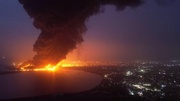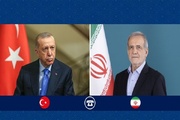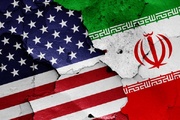Manouchehr Takin underlined OPEC decision makers are facing a dilemma: whether and for how long should the Organization continue its policy and if it does, will it succeed to force out more non-OPEC producers out of the market? "This is by no means certain," he added.
Following the fall of oil prices, OPEC member countries have all faced budget deficits, have drastically cut government expenditure and are experiencing serious economic slow-down or recession with growing unemployment, Takin underlined.
In an exclusive interview with Mehr News, Mr. Takin answered the questions regarding the issue:
Oil prices continue declining slowly. Do you think they have reached the bottom, or we should wait for the next negative record this year?
Some analysts (e.g. Goldman Sachs Bank) have suggested that the price of oil (Brent reference price) could go down to $20 per barrel ($/bbl). Others are less pessimistic, believing that the price of about $36/bbl is the bottom of the cycle. Let me explain.
The supply of oil flowing into the world market is still 1 to 1.5 million barrels per day (mbpd) more than the demand. More importantly, the oil market has been experiencing this excess supply condition since late 2014 and the extra oil supply has been gradually filling the storage spaces around the world and even a large number of oil tankers are used for storing oil, anchored at sea or at ports. The total volume of oil stocks is estimated to be greater than 3 billion barrels and this is putting downward pressure on the price of oil. Price could begin to improve when the market begins to use the stored oil and this could only happen when the world oil supply-demand balance is reversed, i.e. the flow of supply into the world market becomes less than the demand for oil. Unfortunately, supply is still much greater than demand, though there are some hopeful indications.
Let us look at some details using the information from OPEC Secretariat. On the demand side, the growth is expected to continue. World oil demand increased by about 1 million barrels per day (mbpd) in 2014, by about 1.6 mbpd in 2015 and is estimated to increase by about 1.3 mbpd in 2016. Please note that the IEA (International Energy Agency) data differ slightly from OPEC. They are 1.8 mbpd for 2015 and 1.2 mbpd for 2016. These differences will be clarified as both the OPEC Secretariat and the IEA receive more up-to-date information in the coming months. However, they show that the fall in price resulted in higher oil consumption in 2015 relative to 2014, but by 2016 there will be a more ‘usual’ growth in world oil demand.
On the supply side, the growth of oil production outside OPEC slowed down in 2015. It was more than 2 million mbpd in 2014 but was reduced to about 1 mbpd in 2015. For 2016 non-OPEC production is actually expected to decline by about 0.4 mbpd. However, oil production from OPEC, in particular Saudi Arabia, has increased. Total OPEC crude oil production was 30.2 mbpd in 2013 and 30.1 mbpd in 2014, but it has gradually been increasing in 2015. It was 31.6 mbpd in the third quarter. In fact the production increase by OPEC has been the main factor which brought the Brent price from $115/bbl in June 2014 to less than $36/bbl in December 2015.
The answer to the question ‘whether the price of oil has reached the bottom’ depends on OPEC policy. Will the Organization curtail its production in the coming months, or will it continue to overproduce. The OPEC production policy has resulted in the collapse of the price of oil and the low price has caused the reduction of oil production outside OPEC, as was noted above. There has also been cancellation of more than $200 bn of oil industry investment in field projects around the world. This will result in lower oil production in non-OPEC areas in the future. In fact these were the expectations of OPEC ministers when they decided not to limit their own oil output when they met in Vienna in November 2014. However, they had expected much more rapid response to their policy and a more drastic fall in production outside OPEC.
In spite of this relative success for curtailing non-OPEC production, one should note that the policy has had serious consequences for OPEC member countries themselves. All have been suffering financially as their oil revenues have fallen by more than half. They have all had budget deficits, have drastically cut government expenditure and are experiencing serious economic slow-down or recession with growing unemployment. These and other problems are faced by all OPEC countries. The ‘rich’ like Saudi Arabia, the UAE, Kuwait and Qatar had significant financial reserves but their reserves are dwindling and some have been forced to take domestic and international loans. The consequences of the policy have been more damaging and even critical, for those OPEC countries with less foreign exchange reserves, large populations, low per capita income and high dependence on oil. For them, the fall in oil revenue has been critical and many are facing challenging economic and social problems.
One could describe the situation as a stand-off between OPEC and non-OPEC. Who is going to blink first and how long could OPEC endure? There has been great pressure from within OPEC – many member countries have been pressing for a change in policy. In the similar cases of oil price collapse (1986 and 1998-1999) there was pressure on Saudi Arabia also from outside OPEC, especially from the United States. This time this is lacking and the public opinion in the US and in the other oil importing countries around the world is in favour of a low price of oil.
Saudi Arabia and others prefer to continue until more non-OPEC competitors are ‘forced out’. Although OPEC policy has been effective, its impact has not been sufficient to force non-OPEC producers out of the market completely, at least not so far. In fact it could be argued that the low price has made them more resilient (e.g. US shale oil producers). They have lowered their costs and their production could increase again once the price of oil begins to rise.
The dilemma facing OPEC decision makers is whether and for how long should the Organization continue its policy and if it does, will it succeed to force out more non-OPEC producers out of the market? This is by no means certain. More importantly, it is also not certain if OPEC countries can survive a continuation of the drastic loss of their oil revenues. A likely scenario is that OPEC will agree to cut its production, probably sometime in 2016. As on the previous occasions, the Organisation would probably decide to defend a lower oil price than before the oil price collapse. It is also possible that some non-OPEC producers would cut their production in support of OPEC. The historical experience, however, suggests that this is less probable and in any case it would be symbolic and in small volumes. Mexico and Russia did not agree with this idea when they met the Saudi and Venezuelan oil ministers in November 2014 and there have been similar statements by non-OPEC producers since then.
Iran is trying to lure back international oil companies to develop its vast oil and gas reserves once sanctions are lifted under a deal with world powers, and recently lifting of four of them on Iran's petrochemical industry. Do you think it will have strong effect on the oil price? How Iran's presence will affect the market?
The market has already been expecting an increase of Iranian oil exports and that this will begin soon. The current low price is partly due to this expectation. Large quantities of Iranian crude oil are available for delivery on board tankers in the Persian Gulf and in other parts of the world. Iran can also increase its production by 0.5 mbpd within a few months and by another 0.5 mbpd soon after. There are no serious technical constraints in raising production. The limitations could most probably come from the legal procedures for the actual lifting of the sanctions on trading Iranian oil and more importantly, on the international banking system and on Dollar transactions related to Iran. However, most observers of the nuclear agreement believe that additional Iranian oil will enter the world market by spring 2016 and will cause further downward pressure on the price of oil. Iraqi oil exports are also continuing to increase with the progress of its field development projects. Improved security conditions in Libya will result in more oil exports from that country. One could speculate that with all this additional oil, OPEC members will ultimately reach an agreement on cutting their production in defence of price.
The future of this trend is in favor of what groups or countries? Is it beneficial to consumers or producers? What is the effect of this falling prices on the countries of Middle East, especially Iran?
The low price of oil is beneficial to all oil importing countries and final consumers are happy everywhere – the industrialised and the developing countries. On the other hand, the low price has been damaging to the economy of oil exporting countries as was discussed above. Of course many are surviving the low revenue conditions with belt-tightening, reducing expenditure and other public policy undertakings.
The IEA said in a monthly report on December that growth in demand for oil will ease next year to 1.2 million barrels per day, from 1.8 million barrels a day this year. Why many oil producing countries, largely OPEC member states, do not reduce production through coordinated efforts to raise prices?
The larger increase in demand in 2015 was due to the oil price collapse – from about $115/bbl to less than $50/bbl. Consumers could afford driving extra miles and use more petroleum products. However, no more price effect is expected for world oil demand in 2016 and the growth relative to 2015 will be more from income effect, i.e. the growth of GDP.
In the current conditions of the world market, supply has to be reduced for raising the price of oil, but no individual producer is ready to cut its own production. All world oil producers are losing revenue and in theory they should all share the cut in production, though this is an international issue, requiring diplomatic and geopolitical effort and is by no means an easy task. At present OPEC is the only organised institution of oil exporters that its members are in contact with each other and regularly meet and analyse the world oil market. In the past OPEC has cut its production in defence of price and has also increased its production when price has been too high. At present a major cut in production is required. OPEC has to decide on a production ceiling for total OPEC and then allocate quotas to individual member countries. This, however, has been described as ‘opening a Pandora’s box’. The Islamic Republic of Iran will not be ready to cut its production, having suffered from the imposed sanctions and a low level of oil exports in the past few years. Iran will try to compensate for that loss. Iraq, though presently enjoying an increased level of production, would argue that its oil exports had suffered for decades due to wars and international sanctions and will also try to compensate for that loss. Other member countries will have similar arguments and will demand Saudi Arabia, Kuwait, the UAE and Qatar to cut their production. In particular, Saudi Arabia has been benefiting the most from the absence of those countries and had been increasing its production. Other countries will argue that it is only fair that Saudi Arabia cuts its production more than others.
We should remember that price of oil has been determined by market forces and the global supply and demand balance. In the past OPEC has acted within these constraints, has fine-tuned its production and has tried to defend its main source of national income and has also tried to stabilise the market. Technological breakthrough and innovation have increased world oil supply. These were unexpected but were also inevitable. In addition, there have been major developments, though more gradual, in reducing the dependence on oil over the past decades. Consumption efficiency has increased and there has also been substitution of oil by other energies in all countries. The quantity of oil used to produce one unit of GDP has fallen by 60% or more and this trend will continue. As oil exporters, we should be aware that the world demand for oil will not grow for ever and that we should reduce our dependence on oil.
What will be the effect of offshore development and rig building, having lower costs, on oil prices market and how it can be affected by current oil market situation?
Generally the development cost of offshore fields is higher than onshore, though for individual projects costs vary over a wide range and no single figure could be given as the cost of offshore production. Similarly some onshore projects are high cost. The fall in the price of oil has adversely affected all high-cost projects. However, an important point that should be emphasised is that the projects that had already been under development will be continued, especially those with a heavy front end capital expenditure and a long lead time (several years). When most of the heavy investment has been committed and the projects are well advanced, they will be completed and brought into production in spite of the fall in the price of oil. The expenditure is treated as sunk cost. The operating costs are usually much lower and production operations will generate positive cash flow. Such projects will not be cancelled. This was an important factor for the oil industry on the previous occasions of oil price collapse (1986 and 1998). It is still true, but a significant number of oil field projects today have much shorter lead time, relatively less capital cost but higher operating cost. These projects will most probably be cancelled as has already occurred in the case of oil from shale and tight rocks in the United States. The number of drilling rigs in this sector has fallen by more than 50%. These projects have been more responsive to the fall in the price of oil, but these operations could also be resumed and expanded if the price of oil increases, as noted in answer to question 1. These operators have made their operations more efficient. There has also been a fall in the daily rates for rigs and other field services. Thus costs have fallen for shale and tight rock oil and they would need a lower oil price than in the past. There is no agreement on the price at which shale and tight rock activity will be resumed or expanded - $50/bbl, $60/bbl or higher? For the major international oil companies, it had been estimated that a price of $104/bbl was required to cover their capital investments in 2014. This requirement has fallen to $81/bbl for 2015 and is estimated to fall to $66/bbl for 2016 (Wood Mackenzie, Financial Times 28 December 2015).
These figures, though only approximate, nevertheless they strongly suggest that with the improvement in the price of oil, more supply will enter the market and price will not rise back to the $110/bbl - $120/bbl range. In other words, the entry of new supply will provide a ‘cap’ for the price of oil - say $60/bbl to $70/bbl.
Lastly, one should always remember that these discussions are based on a continuation of the recent trends in the world economy and politics. Unexpected events, especially political turmoil could obliterate the oil market. In particular, sudden disruption of production operations will cause a spike in the price of oil that could be greater than the prices suggested above.
Manouchehr Takin is an international oil and energy consultant who worked with the Centre for Global Energy Studies in London from its establishment in 1990 until the Centre closed in May 2014. He had previously worked for nine years at OPEC Secretariat in Vienna following a career in oil and mining industry operations with Iran’s International Oil Consortium, Amoco, Ultramar, National Iranian Oil Company, Shell, as well as the Geological Survey of Iran and Anglo American mining company.
Interview by Lachin Rezaian

























Your Comment